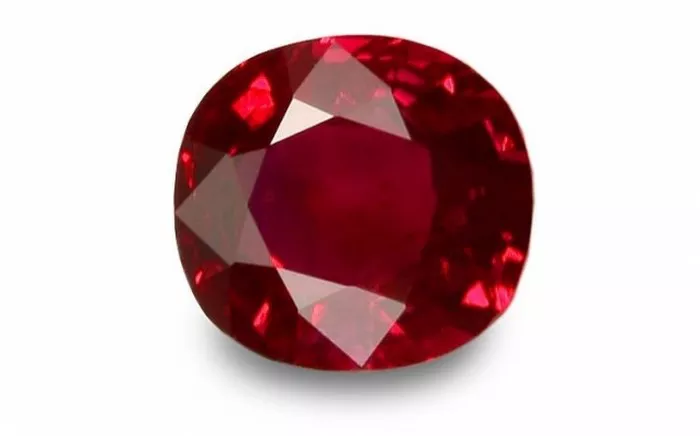Gemstones have long held a captivating allure for humans, with their vibrant colors and intrinsic beauty. Birthstones, in particular, have a special significance as they are associated with the month of an individual’s birth. Each month is represented by a unique gemstone, and these stones hold deep symbolism and historical significance. In this article, we will explore the birthstone for the month of July, which is the mesmerizing ruby.
The Ruby: A Symbol of Love and Power:
Rubies are renowned for their intense red color, which has earned them the reputation of being the “King of Gemstones.” They belong to the corundum mineral family and are valued for their exceptional hardness, second only to diamonds. Rubies have been cherished throughout history for their rich color, durability, and association with love, power, and passion.
Historical Significance and Lore:
The allure of rubies dates back centuries to ancient civilizations like the Egyptians, Indians, and Chinese. Ancient Hindus regarded rubies as the “Rajnapura,” the king of gems, while the Burmese believed that embedding rubies in the flesh would protect them in battle. In European folklore, rubies were considered a talisman against misfortune and a symbol of wealth and vitality.
Birthstone Status:
The practice of associating specific gemstones with birth months can be traced back to biblical times. The earliest mention of birthstones can be found in Exodus 28:17-21, where twelve gemstones are embedded on the breastplate of Aaron, representing the twelve tribes of Israel. Over time, these stones became associated with the signs of the zodiac and eventually with specific months.
Ruby, with its fiery red hue, represents the birthstone for the month of July. Individuals born in July are said to possess the qualities of strength, courage, and passion that are embodied by this magnificent gemstone.
Symbolism and Meaning:
The ruby’s vibrant red color symbolizes love, passion, energy, and vitality. It is believed to promote courage, self-confidence, and motivation. Rubies are also associated with protection against negative energies and promoting harmony in relationships. In addition, it is said to enhance one’s creativity and stimulate the heart chakra, fostering emotional well-being and spiritual growth.
Notable Ruby Discoveries:
Rubies have been mined in various parts of the world, but some locations are renowned for their exceptional quality gems. The Mogok Valley in Myanmar (formerly Burma) has been a primary source of fine rubies for centuries. The region’s “pigeon’s blood” rubies, characterized by their vivid red hue and high clarity, are considered the most desirable and valuable rubies in the world.
Other notable sources of rubies include Thailand, Sri Lanka, Madagascar, Tanzania, and Vietnam. Each location produces rubies with unique characteristics, such as variations in color, clarity, and size.
Ruby Jewelry:
Rubies have long been cherished as exquisite gemstones for jewelry. Their vibrant red color adds a touch of elegance and sophistication to any piece. Ruby jewelry is timeless and can be passed down through generations, making it a valuable heirloom.
Ruby is the birthstone for July and is associated with passion, love, and courage. It is considered one of the four precious gemstones, along with diamond, emerald, and sapphire. Rubies are known for their hardness and durability, ranking just below diamonds on the Mohs scale.
When it comes to ruby jewelry, there are various options available, ranging from simple and understated designs to elaborate and intricate pieces. Some popular types of ruby jewelry include:
Ruby Rings:
Ruby rings are a classic choice for engagement rings, anniversary bands, or cocktail rings. They come in various styles, such as solitaire, halo, three-stone, or vintage-inspired designs. The deep red hue of the ruby makes it a striking centerpiece for any ring.
Ruby Necklaces:
A ruby necklace can make a bold statement. Whether it’s a delicate pendant or a luxurious ruby strand, necklaces adorned with rubies can instantly elevate an outfit. They can be worn for special occasions or as everyday jewelry depending on the design.
Ruby Earrings:
Ruby earrings come in a variety of styles, including studs, hoops, dangle earrings, or chandelier designs. They can add a pop of color and sophistication to any ensemble. Ruby studs are a versatile choice that can be worn daily, while more elaborate designs are perfect for formal events.
Ruby Bracelets:
Ruby bracelets can be elegant and eye-catching. They can feature a single row of rubies or be combined with other gemstones for a unique look. Tennis bracelets, bangle bracelets, and charm bracelets are popular styles that can incorporate rubies.
Ruby Brooches:
Ruby brooches are a timeless accessory that can be worn on clothing, hats, or even as hair accessories. They add a touch of elegance and can be passed down as family heirlooms.
When purchasing ruby jewelry, it’s important to consider factors such as the quality of the gemstone, the design and craftsmanship, and whether it has been certified by a reputable gemological laboratory. The value of rubies is determined by factors like color, clarity, cut, and carat weight.
Caring for ruby jewelry involves regular cleaning using mild soap and warm water, avoiding exposure to chemicals or harsh cleaning agents. It’s also essential to store ruby jewelry separately from other pieces to prevent scratches. Periodic professional cleaning and inspection can help maintain its beauty and longevity.
In conclusion
The birthstone for the month of July is the ruby. Known for its vibrant red color and symbolizing passion, love, and courage, the ruby has been cherished as a precious gemstone for centuries. Whether incorporated into rings, necklaces, earrings, bracelets, or brooches, ruby jewelry adds an elegant and sophisticated touch to any ensemble. As a timeless gem, ruby jewelry can be passed down through generations, making it a valuable and sentimental heirloom. Celebrate your July birthday or simply embrace the beauty of rubies by adorning yourself with this exquisite gemstone.
Related topics:


